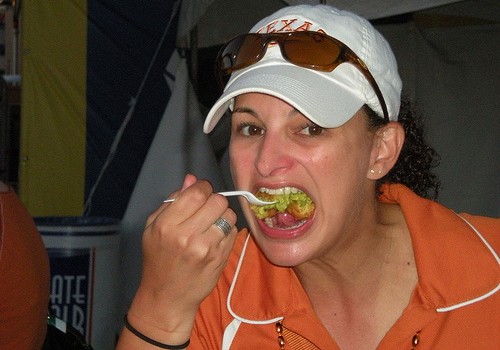
Teeth (Chewing)
Human teeth appear in two sets. There are 20 primary teeth and 32 permanent teeth. Primary teeth consist of two types of molars and two types of incisors. There are 16 permanent teeth arising from the maxilla and 16 from the mandible. The outermost layer of the teeth is called the enamel. It is made of a hard crystalline calcium phosphate compound. The dentine lies between the dental pulp and the enamel. The dentine is less mineralized and is produced by odontoblasts of dental pulp. Dentine is perforated by dentinal channels running from the pulp chamber to the interface between the dentine and the enamel. Pulp is the central soft connective tissue with all the nerves and blood vessels. Cementum covers the root of the tooth. It is 45% inorganic, 33% organic and 22% water.
- Important notification about information and brand names used in this slideshow!
- Photo courtesy of Stacey Huggins by Flickr : www.flickr.com/photos/staceyhuggins/5055677838/
- Cunningham's manual of practical anatomy
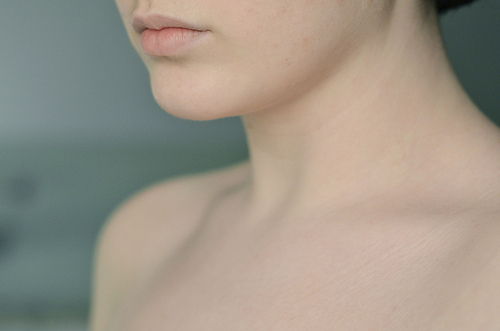
Salivary Glands
There are four main salivary glands in the mouth. They are the parotid, the submandibular, the sublingual and other minor salivary glands. These are exocrine glands, with a secretory component and a duct system to deliver the secretions to a mucosal surface. Parotid glands are situated just in front of and below the ears. The submandibular glands are just inside of the angle of the lower jaw. The sublingual glands are just posterior to the chin. These are innervated by both parasympathetic and sympathetic fibers. These produce saliva. Saliva protects against infections, protects the teeth, digests carbohydrates, lubricates movements of speech and passage of food. Xerostomia is a condition where there is an abnormality of saliva or a lack of formation of saliva.
- Important notification about information and brand names used in this slideshow!
- Photo courtesy of allnightavenue by Flickr : www.flickr.com/photos/allnightavenue/6469511099/
- Cunningham's manual of practical anatomy
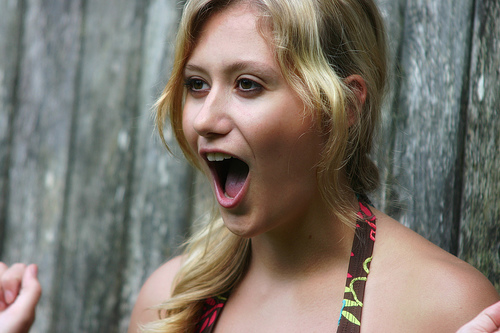
Esophagus
The esophagus starts at the lower end of pharynx (throat), runs downwards in the mediastinum (space between the two lungs in the chest) and forms an acute angle just before joining the stomach. In the mediastinum, it passes posterior to the trachea and anterior to the arch of aorta. It runs behind the heart and pierces the diaphragm at the level of the 12th thoracic vertebra to enter the abdominal cavity where it joins with stomach. The wall of the esophagus has three layers; the mucosa (inner mucosal layer), musculosa (middle muscle layer) and serosa (outer layer). The esophagus is lined by a stratified non-keratinizing squamous epithelium. The muscle layer is responsible for rhythmic peristaltic contractions that transport the food down. The esophagus is perfused by branches from the thoracic aorta and left gastric artery. Gastro-oesophageal reflux is a failure of the lower esophageal sphincter and achalasia cardia is a pathological dilatation and dysmotility of the lower esophagus.
- Important notification about information and brand names used in this slideshow!
- Photo courtesy of Dan Zen by Flickr : www.flickr.com/photos/danzen/981445584/
- Cunningham's manual of practical anatomy
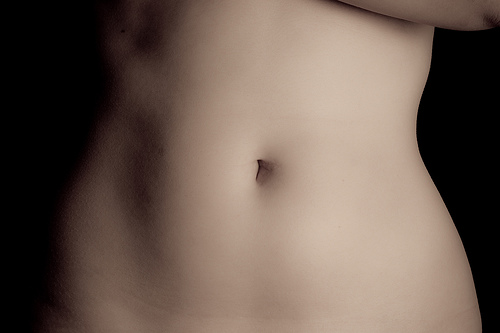
Stomach
The stomach is a J-shaped pouch in the left upper quadrant of the abdomen. It acts as a temporary reservoir of food before it is systematically released into the small bowel for further digestion. The stomach has a cardia, a fundus, a body and a pylorus. The stomach is lined by a simple columnar epithelium. It has an outer longitudinal, a middle circular and an inner oblique layer of muscle. The stomach is supplied by the left and right gastric arteries, left gastro-omental artery and the gastroduodenal artery. It secretes gastrin, cholecystokinine, secretin, enteroglucogon and gastric inhibitory peptide. Gastritis is an acute inflammation of the stomach lining caused by excessive acid secretion and loss of mucosal protection.
- Important notification about information and brand names used in this slideshow!
- Photo courtesy of Filip Bunkens by Flickr : www.flickr.com/photos/loneblackrider/3175090147/
- Cunningham's manual of practical anatomy
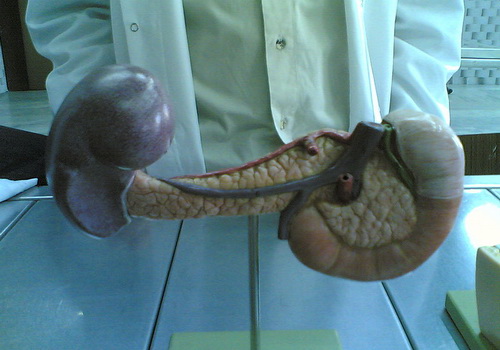
Pancreas
The pancreas is a leaf-like organ made up of two parts. It has a head, body, tail and the uncinate process. The pancreas arises embryologically from the fore-gut epithelium. It lies posterior to the omentum and the stomach at the level of the second lumber vertebra. The head of the pancreas lies nestled in the curvature of the duodenum. The tail of the pancreas lies posterior to the spleen. The splenic vessels run posterior to it. Histologically, the pancreas has two components. The exocrine component secretes various digestive enzymes, while the endocrine component secretes insulin, glucagon, somatostatin and pancreatic polypeptides.
- Important notification about information and brand names used in this slideshow!
- Photo courtesy of Süleyman Habib by Wikimedia Commons : commons.wikimedia.org/wiki/File:Pancreas_model_back.jpg
- Cunningham's manual of practical anatomy
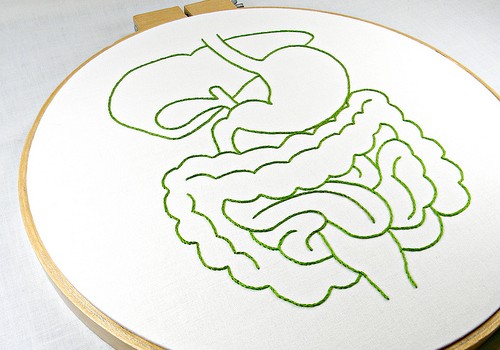
Large Intestines
Large intestines start at the caecum and end at the rectum. There are five parts. The caecum lies at the right lower abdomen and receives digested food from the ileum. It is continuous with the ascending colon along the right side of the abdomen. It turns towards the left side at the liver forming the hepatic flexure. The transverse colon runs from the hepatic flexure to the splenic flexure just below the spleen in the left upper abdomen. There it turns downwards (splenic flexure) to form the descending colon. The descending colon is continuous with the sigmoid colon which lies in the lower left side of the abdomen. The sigmoid colon empties into the rectum. The large intestines appear like a chain of interconnected sacs.They have longitudinal cords of muscle known as tinea coli. Water absorption and stool formation occurs in the large intestines.
- Important notification about information and brand names used in this slideshow!
- Photo courtesy of Hey Paul Studios by Flickr : www.flickr.com/photos/hey__paul/8480135160/
- Cunningham's manual of practical anatomy
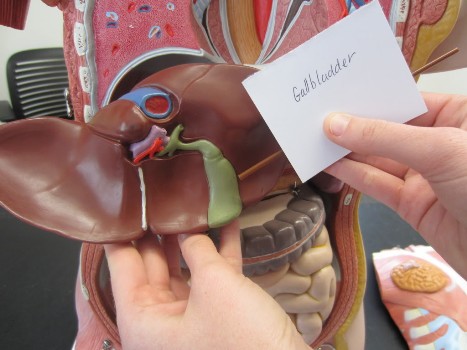
Gallbladder
The gallbladder is a temporary reservoir of bile until it is secreted into the duodenum via bile ducts. The gallbladder lies on the posterior inferior surfaceof the liver. It has a fundus, a body and a neck. The wall of the gallbladder consists of a mucosa, musculosa and a serosa. Bile is formed in the liver and transported down through two hepatic ducts into the common hepatic duct. This joins with the cystic duct coming from the gallbladder to form the common bile duct. Infections of the gall bladder are called cholecyctitis. Gall stones are known as cholelithiasis. These may cause fever, left upper abdominal pain and yellowish discoloration of skin.
- Important notification about information and brand names used in this slideshow!
- Photo courtesy of ursulaar by Photobucket : media.photobucket.com/user/ursulaar/media/IMG_0597.jpg.html?filters[term]=gallbladder&filters[primary]=images&sort=1&o=34
- Cunningham's manual of practical anatomy
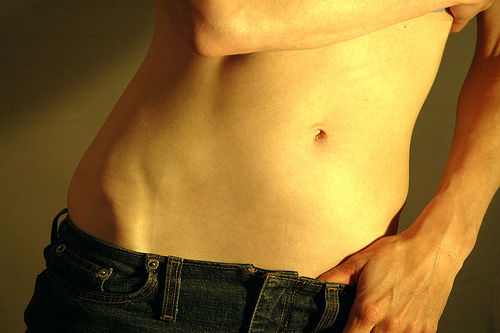
Liver
The liver is situated in the right upper abdomen below the diaphragm. It arises from the foregut embyologically. It has left and right lobes, a caudate lobe and a quadrate lobe. The liver has a dual blood supply. Blood from the intestines reach the liver through mesenteric veins. Blood from the systemic circulation reach liver through the hepatic arteries. The liver is a vital organ with a multitude of biofunctions. It synthesizes amino acids, glycogen, cholesterol, lipids, clotting factors, red blood cells (during foetal period), bile and insulin-like growth factors. It metabolizes bilirubin, drugs, alcohol and ammonia. The liver participates in vitamin D metabolism.
- Important notification about information and brand names used in this slideshow!
- Photo courtesy of Darren Barefoot by Flickr : www.flickr.com/photos/dbarefoot/17083596/
- Cunningham's manual of practical anatomy
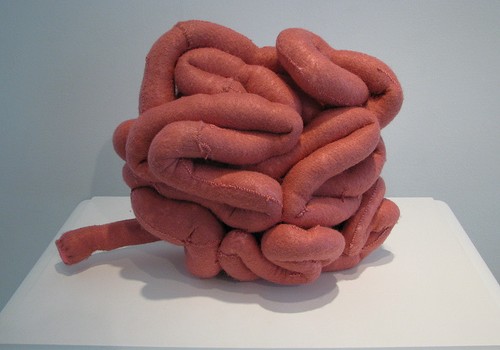
Small Intestines
The small intestines start from the duodenum and end at the caecum. The small bowel has two parts; jejunum and ileum. The small intestine is 6.9 meters long on average in a healthy adult male. The wall of the small intestine is made up of mucosa, submucosa, muscularis externa and serosa. Mucosa is convoluted into finger-like processes called villi to increase the surface area for absorption. The small intestine is lined by a simple columnar epithelium. It contains specialized cells for secretory functions (goblet cells). Submucosa houses deep glands of small intestine. Muscularis externa (a muscular layer) consists of a longitudinal layer and a circular layer. There is a plexus of nerves called the Auerbach’s plexus in between the two muscle layers. Serosa is the visceral peritoneal covering. Most of the digestion of carbohydrates, lipids and proteins occur in the small intestine. Small intestinal cells contain digestive enzymes on the luminal surface of the cells and the digestion is aided by pancreatic and biliary secretions.
- Important notification about information and brand names used in this slideshow!
- Photo courtesy of Cliff by Flickr : www.flickr.com/photos/nostri-imago/2849341081/
- Cunningham's manual of practical anatomy
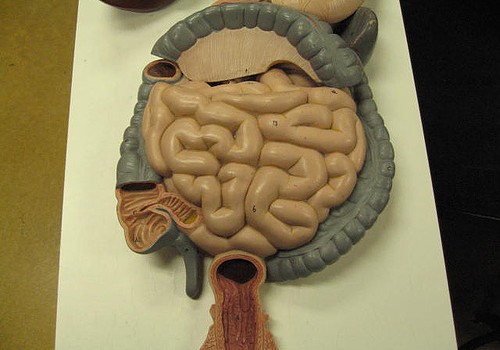
Rectum And Anal Canal
The rectum is a short tube running from the distal end of the sigmoid colon to the anal canal. It lies vertically in the pelvis. In males, the bladder lies in front of the rectum and in females the uterus lies in front of the rectum. The fold of peritonium between the rectum and the uterus is known as the pouch of Douglas. The structure of the rectal wall is similar to that of the large intestines. The rectum and the anal canal receive blood from the inferior mesenteric artery. They both store formed stools until an opportunity presents itself for defecation. The anal canal connects the rectum to the anus. It is a short vertical tube. Its wall has a rich venous plexus. Hemorrhoids are a venous engorgement of the wall of the anal canal.
- Important notification about information and brand names used in this slideshow!
- Photo courtesy of GreenFlames09 by Flickr : www.flickr.com/photos/greenflames09/143141020/
- Cunningham's manual of practical anatomy


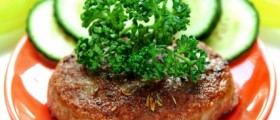
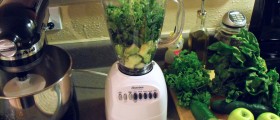
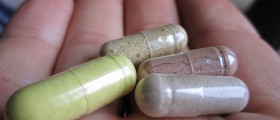
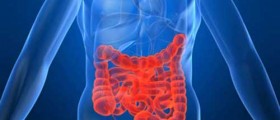
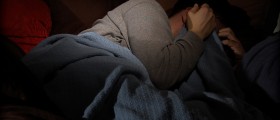
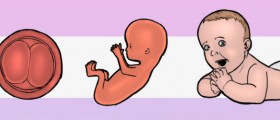
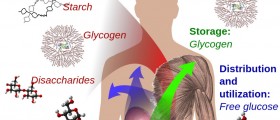
_f_280x120.jpg)
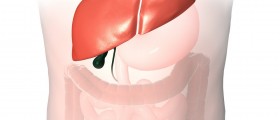
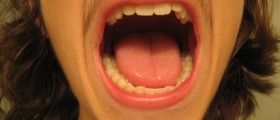
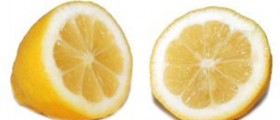
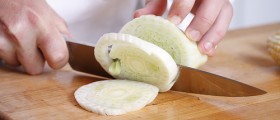
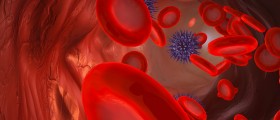
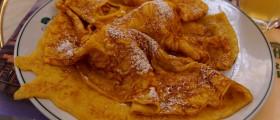
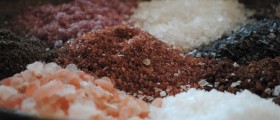
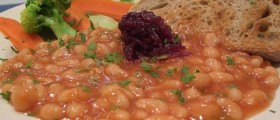
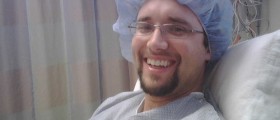

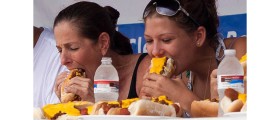
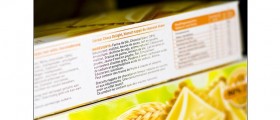
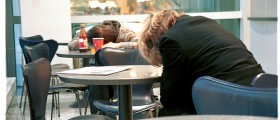
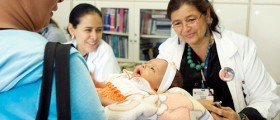
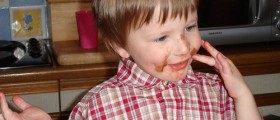


Your thoughts on this
Loading...